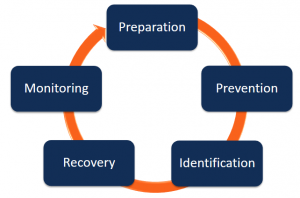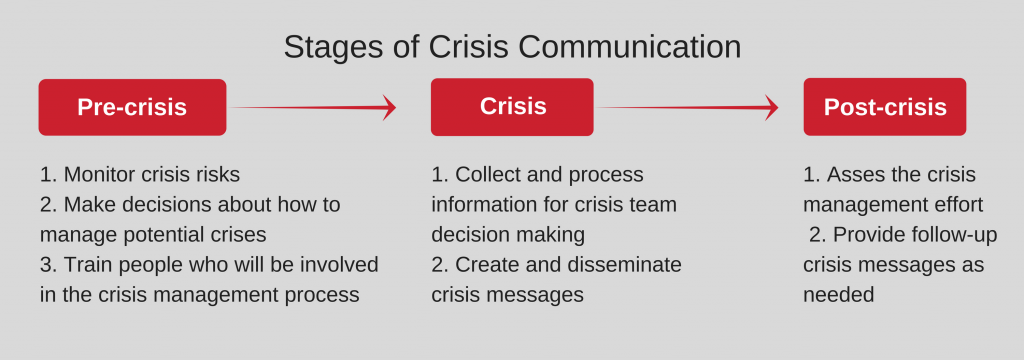Crisis Management – Are You Prepared?
Research by Oxford Metrica shows that it is not the fact of suffering a crisis that damages a business – in reality no business can eliminate the possibility of a problem- rather, what really counts is how the organization is seen to manage the crisis: take control quickly, respond professionally, and communicate well and the organization is likely to prosper. Dither, hide or appear to be uncaring, and tough – even terminal – challenges may lie ahead.
As a result, thorough crisis preparedness is essential so that the organization can be off the starting blocks like an Olympic sprinter. And – just like athletics – what used to be speedy enough to win a gold medal is now far from world class. They used to say that the first 24 hours of a crisis were crucial. The speed and spread of crises today – largely driven by the immediacy and reach of on-line media – makes a mockery of this golden rule. Being prepared before the crisis breaks and being able to respond almost instantaneously allows organizations to retain control over their destiny.
This means that all the old lessons of crisis preparedness still apply (but more so):
- Understand your areas of vulnerability
- Develop and implement crisis management plans and processes
- Rehearse the plan and enhance it
- Train your people, especially those required to act as a spokesperson in a crisis
- Monitor the landscape
- Engage in pro-active issues management
But the power of online media presents a new and potentially scary dynamic. Digital media has enormous power to both create and destroy reputations. And many organizations are still grappling with how to harness online media in the face of this potentially business-critical challenge.
Failing to do this leaves the organization frighteningly vulnerable in today’s world. If a crisis is gestating online, then the organization must have the capability to also manage it online. Sticking to traditional media has the potential for at least three negative results. Firstly, you may fail to reach those people most affected and concerned by the crisis – the people talking about it online. Secondly, you lose the opportunity to engage with the online community which has the power to spread positive messages about what the organization is doing to deal with the situation. And finally, you may further escalate the situation by communicating bad news to people who were previously unaware that there was a problem.
The key to success is the combination of traditional reputation management insights and expertise, and the application of the latest on-line reputation management tools to get the message through.
As the start point for online reputation management, companies should:
- Develop crisis management “dark sites” to respond quickly, clearly and effectively to emerging issues and incidents
- Ensure that it has identified and set up the infrastructure to communicate via social media such as Twitter and Facebook
- Implement online media monitoring to track what is being said about them in cyberspace
- Employ search engine optimization to ensure the company’s perspective is heard loud and clear rather than being swamped by the views of others
- Develop the capability to quickly create content – latest information, briefing papers, podcasts, blogs – for online media
The internet has the power to spark and spread a crisis: but used effectively, digital tools have enormous potential to help organizations prevent and manage them too.
The Importance of Communication During Disaster Management A crisis is defined by a series of events occurring rapidly and unplanned in an area that you manage. The importance of excellent communication cannot be stated enough, because all your decisions as the emergency manager are based on the information gained from all the responders and witnesses to the disaster.
In fact, a good emergency management plan will have a dedicated communication position and their sole responsibility is to coordinate all the other communication to provide the manager with a single stream of communication.
I have witnessed a manager trying to control a crisis, while using a company mobile phone, his personal mobile phone, a radio handset and people nearby speaking to him. Where do you think his ability to actually manage this crisis was?
Check Out: Strategies Behind Crisis Management
First failure point in disasters is the communication systems
It is strange to see just how many managers rely on mobile phones as the company communication system during a disaster. Take a second to think about how long a mobile system stays functional for during a disaster until it is overloaded with users and crashes.
This is where the importance of selecting the right communication equipment is highlighted. If the equipment fails, it doesn’t matter how skilled your emergency management team is, they cannot talk to each other passing on vital data.
Consider reviewing your emergency equipment for;
- Do your company mobile phones have all employees’ numbers in the contact list
- Do you have spare batteries, fully charged and ready to go for all phones relied on during the emergency?
- Will your landline phone system still be in use if the power/computer goes down?
- How do you manage multiple conversations on your mobile without hanging up on each other?
- Does always everyone on the response team have their communication equipment with them
The second failure point is lack of efficiency using the communication equipment
When conducting practices, it is easy to speak slowly and clearly with all waiting patiently for you to finish. This is no way to practice for emergencies.
Try this instead. Give everyone a radio/phone and tell them all to walk briskly around a decent sized park or oval nearby for a minute or two.
You move to the middle and then call them. Ask them to describe what they see quickly as they walk past the different objects. Listen to what happens next. If this doesn’t instill in you the importance of good communications during a disaster nothing will.
What you will experience is;
- Rapid breathing as adrenalin kicks in and people rush their spoken words
- Some cutting over others as they are not listening to the comm’s but thinking about what they will say next.
- A lot of dead radio space as people are trying to understand how to describe what they see to you and forgetting that they have the phone/radio on
As a direct result of this little experiment you will also get a taste of what it will be like to try and listen to 10-20 different messages coming at you in the center.
Check Out: Steps for Designing a Workplace Crisis Management Plan
How to improve your communications
Assign callsigns and radio codes for building names and locations for example so that you reduce the time each person stays on the network.
Assign a Communications Leader to handle all inbound and outbound calls by becoming the center spoke and allow you to make decisions and not take messages.
Good emergency management means everyone has a role to do and someone needs to be responsible for ensuring your communication systems will stand up to the challenge. Don’t just focus on fire extinguishers and first aid kits as these will do no good to you, if you cannot get the messages to your emergency team.
Even just four people in your communication system means there are eleven channels of communication that messages will flow along. Imagine how many communication channels need managing for 20 response staff.














